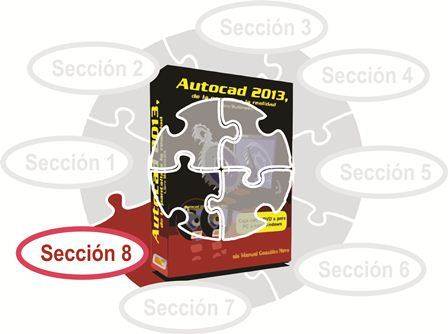3D Drawing with AutoCAD - Section 8

CHAPTER 41: WHAT FOLLOWS?
We have completed this Autocad course. Does that imply that there is nothing beyond? No way. In spite of the extension of this work, we have done nothing more than introduce it to one of the most important CAD programs in the market and we are far from having done it exhaustively.
Therefore, before the question of "What's next?" Several things need to be mentioned: first, in light of the later themes, he will find the opening chapters to be fairly simple, and going through them will give him a clearer view of the whole. So my first advice is to read everything again and watch all the videos again, I assure you that it will be extremely useful and, this time, it will take less time than you imagine.
Second, check the list of program commands at least once, so that you know, briefly, those commands that we do not use in this course. Do the same with all program variables. Both lists are in the user manuals and in the Autocad Help menu.
Third, there are a number of issues we have set aside (for the purposes of this Guide) that you may wish to explore. To begin, keep in mind that some of the drawing tasks, especially those of a repetitive nature, can be automated using AutoLISP, the Autocad programming language. With it it is possible to create the equivalent of Excel macros. Now that if you are familiar with other programming languages, you may be happy to know that Autocad also supports Visual Basic for Microsoft Applications.
Fourth, now that you have heard of other CAD programs from Autodesk, the company that created Autocad, and think that their work is even more specialized, consider that many of these other programs are based on Autocad. In other words, its drawing tools are very similar, if not the same, since in several cases they barely add some specific features to the area for which they were developed. Which means that mastering Autocad implies already knowing a good number of drawing tools from various programs of the same company, precisely all those that begin with the name "Autocad": Civil 3D, Map 3D, Architecture, Electrical, Raster Design, Structural Detailing etc. And others, such as Autodesk 3D Max, which although it has gone through its own development, shares with Autocad the similarity of many of the three-dimensional drawing generation and rendering tools. However, these are even more specialized, as it also offers options for creating digitized animations.
If all this were not enough, there are also third-party programming developments that enrich the performance of Autocad, from simple collections of block libraries, external references, pre-elaborated styles of text, lines, annotations, etc. (which, as will be remembered, can be used thanks to the Design Center and Content Explorer), to programs that add or modify the Autocad menus to specialize in certain engineering or architecture tasks.
As you can see, the world of CAD applications is cumbersome and believe me, an Autocad expert is well valued in many companies. If you have carefully studied this course, then you have come a long way, but I would be lying if I told you that it has already gone all the way. On the contrary, with what is exposed in this final chapter, it should be clear that he still has a good enough stretch ahead, but I'm sure he's already well-trained and well-equipped to travel quickly. Be constant.

